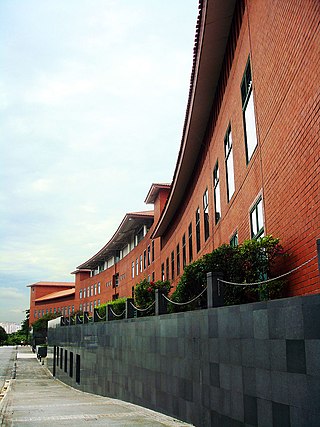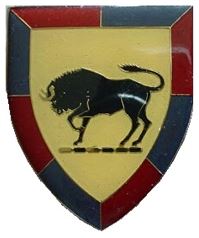
The Namibian Defence Force (NDF) comprises the national military forces of Namibia. It was created when the country, then known as South West Africa, gained independence from apartheid South Africa in 1990. Chapter 15 of the Constitution of Namibia establishes the NDF and defines its role and purpose as, " ... to defend the territory and national interests of Namibia".

Military recruit training, commonly known as basic training or boot camp, refers to the initial instruction of new military personnel. It is a physically and psychologically intensive process, which resocializes its subjects for the unique demands of military employment.

The South African Army is the principal land warfare force of South Africa, a part of the South African National Defence Force (SANDF), along with the South African Air Force, South African Navy and South African Military Health Service. The Army is commanded by the Chief of the Army, who is subordinate to the Chief of the SANDF.

A drill instructor is a non-commissioned officer in the armed forces, fire department, or police forces with specific duties that vary by country. Foot drill, military step, and marching are typically taught by drill instructors.
The Officers' Training Corps (OTC), more fully called the University Officers' Training Corps (UOTC), are military leadership training units operated by the British Army. Their focus is to develop the leadership abilities of their members whilst giving them an opportunity to take part in military life whilst at university. OTCs also organise non-military outdoor pursuits such as hill walking and mountaineering. UOTC units are not deployable units nor are their cadets classed as trained soldiers until completion of MOD 1 training. The majority of members of the UOTC do not go on to serve in the regular or reserve forces.

The Army Cadet Force (ACF), generally shortened to Army Cadets, is a national youth organisation sponsored by the United Kingdom's Ministry of Defence and the British Army. Along with the Sea Cadet Corps and the Air Training Corps, the ACF make up the Community Cadet Forces. It is a separate organisation from the Combined Cadet Force which provides similar training within principally private schools.

The South African Army Infantry Formation supervises all infantry within the South African Army.
The Indian Defence services have established numerous academies and staff colleges across India for the purpose of training professional soldiers in military sciences, warfare command and strategy, and associated technologies.

The Sri Lanka Army is the oldest and largest of the Sri Lanka Armed Forces. The army was officially established as the Ceylon Army in 1949, though the army traces it's roots back in 1881 when Ceylon Light Infantry Volunteers was created; the army was renamed as the 'Sri Lanka Army' when Sri Lanka became a republic in 1972. In 2024, the Army had approximately 150,000 personnel.

The Officer Cadet School is a military training centre that trains commissioned officers for the four branches of the Singapore Armed Forces (SAF): the Army, the Navy, the Air Force, and the Digital and Intelligence Service.
The South African Army is divided into functional branches, known as corps. Most consist of units, but some, such as the SA Staff Corps, consist only of personnel who are assigned to headquarters and units. The following is a list of corps established since 1912.

United States Air Force Basic Military Training is a seven-week program of physical and combat training required in order for an individual to become enlisted into the United States Air Force, Air Force Reserve, Air National Guard and United States Space Force. It is located at Lackland Air Force Base in San Antonio, Texas.

1 South African Infantry Battalion is a mechanized infantry unit of the South African Army.

The School of Artillery is the South African Army's specialized artillery training school

The South African Infantry School is within the Army Base in Oudtshoorn, Western Cape. The Infantry School, now at Oudtshoorn, was established in November 1953, after a history dating back to the South African Military School in Bloemfontein, established in 1912. It is the Infantry’s “centre of excellence” and offers a number of infantry-specific courses to regulars and Reservists.

The South African Army Signal Formation is a formation/corps of the South African Army.
The Namibian Special Forces is a special operations command of the Namibian Defence Force responsible for special forces component commands army and marines. The command consists of Namibian Army Commando and Paratrooper, and the Namibian Marine Corps Amphibious Special Operations Unit. The Army Commando specialize in air assault and airborne operations, capture or kill high-value targets, counterterrorism, direct action, hostage rescue, insertion behind enemy lines, executive protection, and special warfare operations, while the Marine Corps Amphibious Special Operations Unit specialize in amphibious warfare, direct action, executive protection, insertion behind enemy lines, maritime counterterrorism and hostage rescue, naval boarding, naval special warfare operations, operating that originate from a river, ocean, swamp and delta, and underwater demolition. The army units receive training assistance from former South African Special Forces (Recces) and the marine corps from the Brazilian Marine Corps. The units regularly participate in Southern African Development Community (SADC) special forces exercises.

The Namibian Defence Force Training Establishment is a training unit of the Namibian Defence Force. It is the premier training institution of the Namibian military and offers a variety of training ranging from basic military training to vocational training. It was previously known as Military School.

The School of Engineers is part of the South African Army Engineer Formation, which provides combat engineering corps training and teaching to military officers and personnel as well as other Military Schools throughout the South African National Defence Force. They are currently the only Military School in Southern Africa to formally present IEDD.

The South African Army College is a training unit of the South African Army.



















